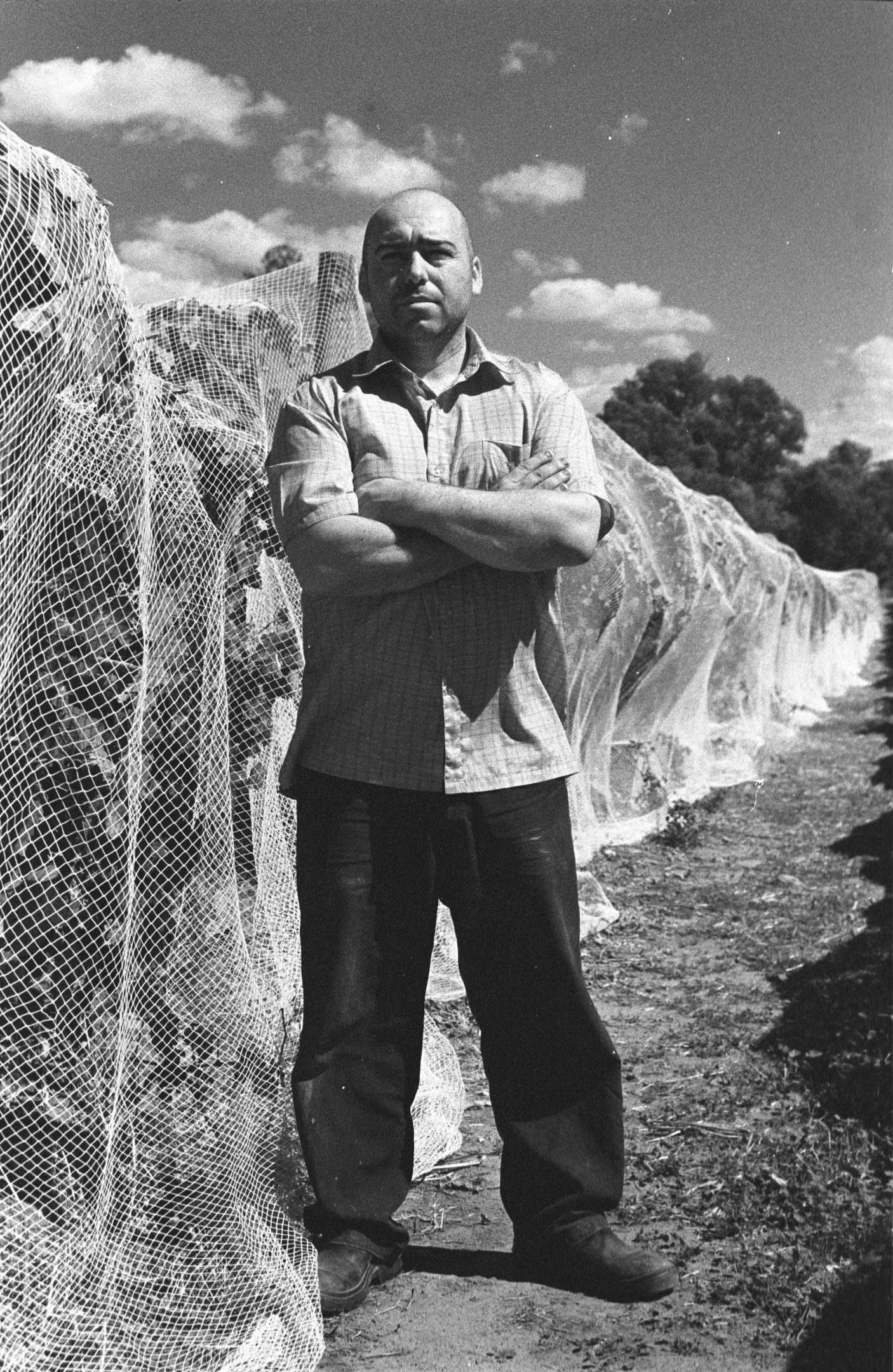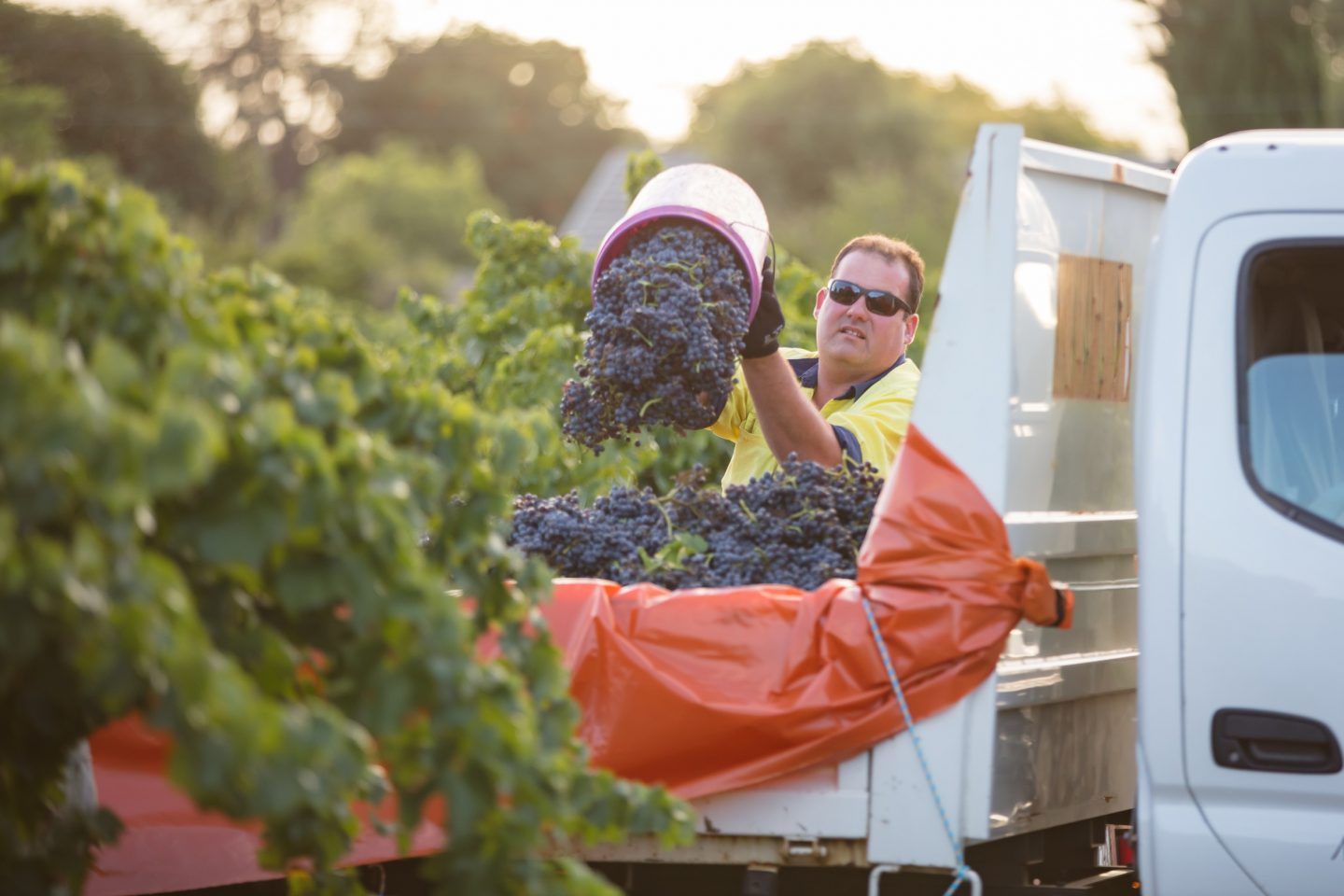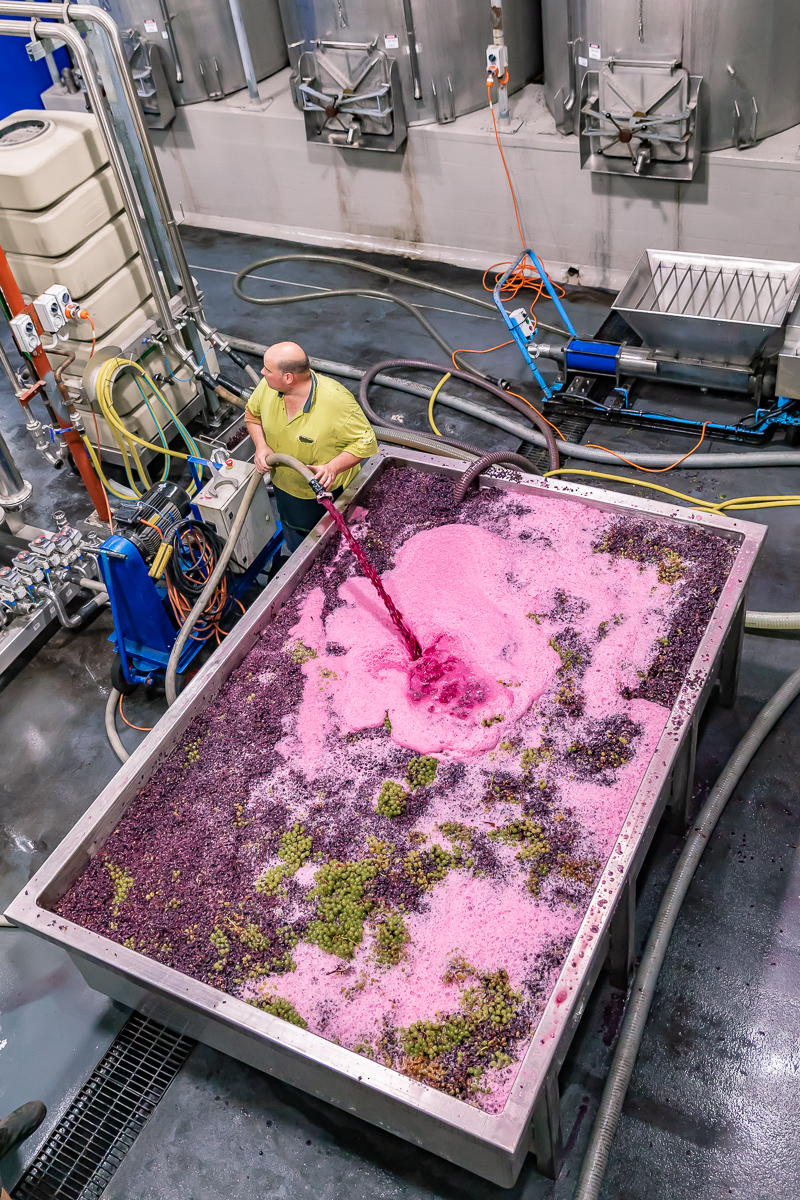Dominic Torzi understands that value is more than just a cheap price – it must also encompass quality, care and satisfaction. His proud Italian upbringing placed great value on being able to drink affordable, delicious wine every day, and this has become a fundamental tenet of how he makes and markets Torzi Matthews wines.
“I was brought up to buy well, but to buy affordably – especially with what we drink and eat,” says Torzi “It’s about respect, on many levels; what we share at the table with our family and friends, what pride I have in making wine that has purity and generosity, and what a customer expects every time they open a bottle of wine. If we all respect value, nobody gets disappointed.”
When Torzi and his partner Tracy Matthews made their big move in 1996 from the Adelaide Plains to settle in the Barossa, they planted their own vines, including several Italian grape varieties that echoed Torzi’s Abruzzese heritage.
“Growing our own grapes has been the key to controlling the quality of our end product and setting a price that we’re comfortable with,” says Torzi “I keep modest overheads in a small family winery, so I charge accordingly. I’m happy to not live wealthy.”
The most popular Torzi Matthews wine is Schist Rock shiraz, sourced from their Eden Valley vineyard, which sells for $25 and shames many wines costing double that price for its generous, bright flavour and lick of minerality. There’s also great value to be found in their more exotic Vigna Cantina range of sangiovese, trebbiano, negro amaro ($28 a bottle) and the only prosecco grown in the Barossa ($26 a bottle).
 Dominic Torzi
Dominic Torzi
“I really wanted to introduce these new grape varieties to a local audience at modest prices, to entice greater interest in these styles of wine,” he says. “These are wines everyone should reach for. They’re definitely the go-to wines in our home when family and friends get together to eat. ”
More wines that bear Torzi’s winemaking fingerprints carry similarly modest prices – $18 shiraz and grenache from the Adelaide Plains made as collaborations with his old high-school buddy, Tim Freeland, under the lables Old Plains Wine Co and Longhop. Freeland and Torzi share a similar egalitarian ethos to wine. “These old vines in the Adelaide Plains tend to carry larger crops, so we believe our production savings should get passed on to the consumer,” says Torzi.
Even Torzi’s beloved cool climate winemaking project – Terraced Hills chardonnay and pinot noir, sourced from Adelaide Hills growers – is significantly cheaper than comparable wines. “This is my love affair rather than my core business, but it has to make sense beside my other wines. I’d feel dishonest if I priced these at $40 just because I bought some really smart cool-climate fruit.” They sell for a modest $28, which almost defies the 2018 Terraced Hills Pinot Noir boasting such fine, nuanced cherry flavours held firm and taut due to clever, careful winemaking. “I’m just pleased that people respect and can see the value in what we do,” says Torzi.
Patritti – a 1000-tonne family-owned winery tucked unobtrusively within suburban Dover Gardens – has a 94-year history of producing generous, fruit-driven wines that belie their modest prices.
Winemakers James Mungall (grandson of the founder Giovanni Patritti) and Ben Heide have remained true to the company heritage, producing its Springs Estate range of whites for $14 and reds for $16, five wines with sturdy, generous flavours in the Merchant series at $24 each, and sprightly alternative varieties – vermentino for $18, trincadeira for $22 and saperavi for $28.
 Harvest time in the Marion vineyard
Harvest time in the Marion vineyard
While the Patritti range climbs higher to single vineyard grenache and shiraz for $35 and reserve shiraz for $60, the ace in the deck is a wine produced from the last remaining vineyards in the once-abundant Sturt Creek floodplain.
For the past decade, Patritti has tended a small vineyard next to the Marion swimming pool, planted in 1907 to grenache. The winery has also become custodian of a tiny Marion Council vineyard on the banks of the Sturt Creek, planted to Pedro Ximénez more than 50 years ago.
After severe pruning of the unkempt Pedro Ximénez vines, the 2020 crop produced only a tiny amount of fruit, so the winemakers experimented by co-fermenting whole bunches with the Marion grenache to make April Red, a fresh, early-drinking style that is the first red wine in Australia issued from this year’s harvest.
“It’s actually reviving a style Patritti has done earlier,” explains Mungall. “The first April Red was released in 1978, so there’s a terrific historical link to this wine. It’s so bright and fresh, and adding the Pedro grapes gives such an aromatic lift to the grenache. I’m hoping we’ll be able to make this style of wine again next year.” History, innovation and ingenuity – for only $24 a bottle.
The Follett family runs Lake Breeze Wines at Langhorne Creek with modest farming sensibility, reflecting their long transition from dairy cattle to growing grapes and producing wine. Winemaker Greg Follett has long adhered to a philosophy of overdelivering satisfaction for the price, to ensure that Lake Breeze customers come back for a second purchase. “Affordability equals accessibility,” says Follett, “and a small winery has to do this to survive.”
Beyond the winery’s impressive entry level Bull Ant range – shiraz, cab/merlot and chardonnay at $17 a bottle – there is outstanding cabernet sauvignon, shiraz and old vine grenache for $25 a bottle, with these having helped bring Lake Breeze an astounding 53 trophies and more than 177 gold medals at major Australian wine shows over the past 30 years.
The famed Bernoota blend of cabernet and shiraz (sourced from 40-year-old vines and matured in mostly old oak for 18 months) won the trophy for best wine of show at the 2006 Royal Adelaide Wine Show – and the new 2018 vintage sells at cellar door for $22 a bottle. Follett remains wary of hiking prices to reflect Bernoota’s celebrated achievements.
“I think our customers now expect such quality at this price, and I’m happy with that,” says Follett. “It’s a gateway to our brand – a solid symbol of what Lake Breeze represents. The integrity of this wine is the key, and people notice if you dare to tamper with that. It’s what our reputation is judged on, and this is what holds you in good stead in the tough times.”
 Patritti Wines winemaker James Mungall
Patritti Wines winemaker James Mungall
Wirra Wirra Church Block, at $22 a bottle, remains a standard-bearer for value – and the McLaren Vale winery continues to approach this bright and generous red blend very seriously. It remains at the forefront of the company’s marketing, ahead of its more august Chook Block Single Vineyard shiraz ($150 a bottle) and The Holy Thirst cab/shiraz ($125 a bottle).
Since 1972, Church Block has signalled to consumers that Wirra Wirra delivers value above what they might expect from a modestly priced wine, making it the critical product by which the winery is judged. As such, it’s respected as being the wine around which the company’s enduring success circulates, as Wirra Wirra managing director and CEO Andrew Kay declared during the winery’s 125th anniversary celebrations in late 2019.
The tradition proudly continues, with the just-released 2018 Church Block (51% cabernet sauvignon, 38% shiraz, 11% merlot) showing a nod to contemporary drinking style. Rather than being rich and plummy, it’s now more edgy and lively, with a sharp acid seam keeping flavours bright and lean. Wirra Wirra still proudly declares it will cellar beautifully for a decade – and historical bottles produced during boisterous 125th anniversary celebrations certainly proved this to be true, underlining that modestly priced wines do not indicate diminished quality or care.
Get the latest from The Adelaide Review in your inbox
Get the latest from The Adelaide Review in your inbox